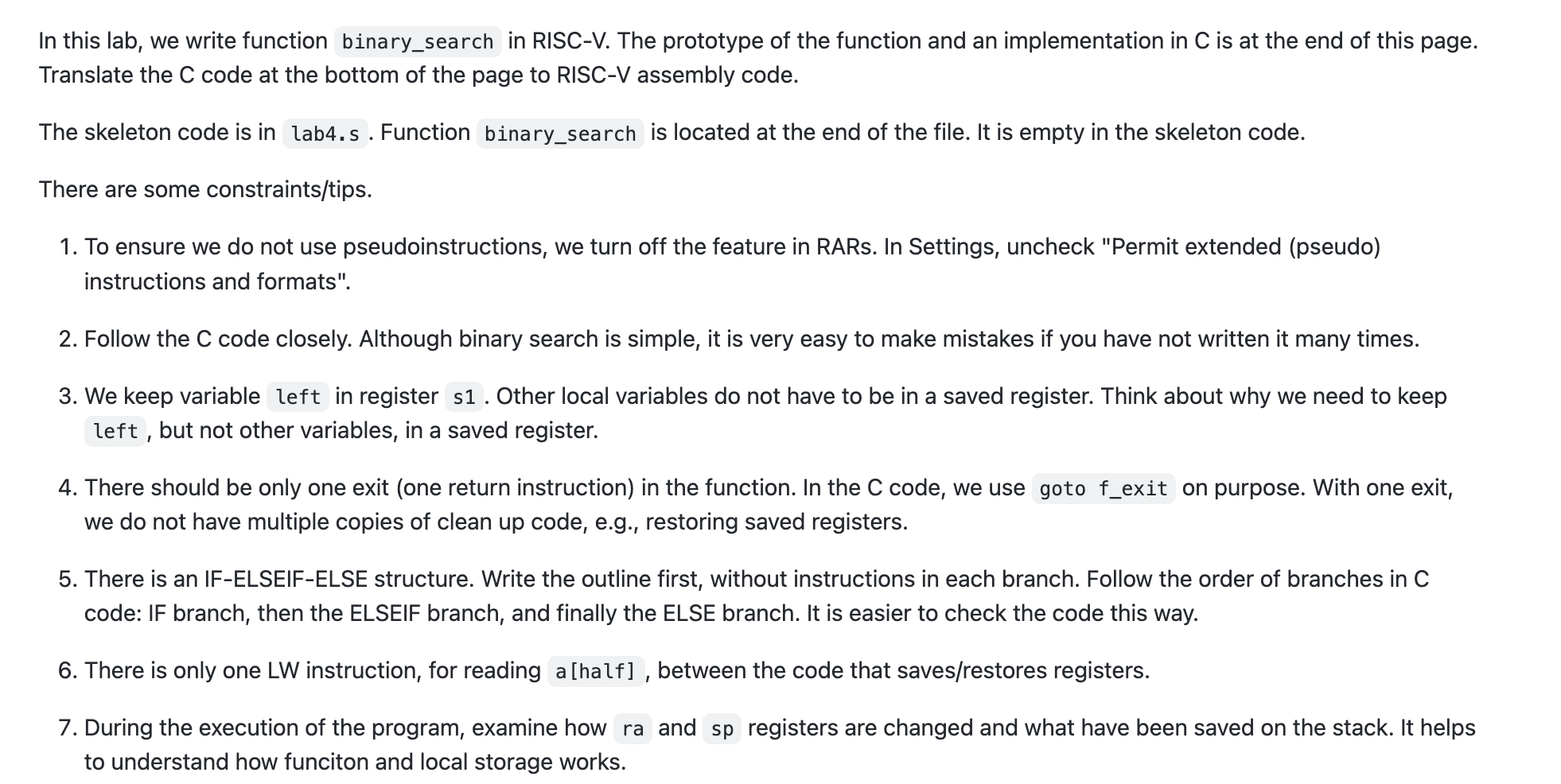Question
Please follow the instructions below: This is the c code i was given int binary_search(int a[], int n, int v) { int rv; if (n
Please follow the instructions below:

This is the c code i was given
int binary_search(int a[], int n, int v)
{
int rv;
if (n == 0) { // nothing in the array
rv = -1;
goto f_exit; // return -1
}
int half = n / 2; // integer division
int half_v = a[half];
if (half_v == v) {
rv = half;
}
else if (v
// search the first half, excluding a[half]
rv = binary_search(a, half, v);
}
else { // v > half_v
// search the second half, excluding a[half]
int left = half + 1;
// &a[left] means the address of a[left]
rv = binary_search(&a[left], n - left, v);
if (rv >= 0) {
rv += left;
}
}
f_exit:
return rv;
}
This is the sample code for the RISC-V that I want to be solved:
| .data | |
| .align 2 | |
| word_array: .word | |
| 0, 10, 20, 30, 40, 50, 60, 70, 80, 90, | |
| 100, 110, 120, 130, 140, 150, 160, 170, 180, 190, | |
| 200, 210, 220, 230, 240, 250, 260, 270, 280, 290, | |
| 300, 310, 320, 330, 340, 350, 360, 370, 380, 390, | |
| 400, 410, 420, 430, 440, 450, 460, 470, 480, 490, | |
| 500, 510, 520, 530, 540, 550, 560, 570, 580, 590, | |
| 600, 610, 620, 630, 640, 650, 660, 670, 680, 690, | |
| 700, 710, 720, 730, 740, 750, 760, 770, 780, 790, | |
| 800, 810, 820, 830, 840, 850, 860, 870, 880, 890, | |
| 900, 910, 920, 930, 940, 950, 960, 970, 980, 990 | |
| # code | |
| .text | |
| .globl main | |
| main: | |
| addi s0, x0, -1 | |
| addi s1, x0, -1 | |
| addi s2, x0, -1 | |
| addi s3, x0, -1 | |
| addi s4, x0, -1 | |
| addi s5, x0, -1 | |
| # help to check if any saved registers are changed during the function call | |
| # could add more... | |
| # la s1, word_array | |
| lui s1, 0x10010 # starting addr of word_array in standard memory config | |
| addi s2, x0, 100 # 100 elements in the array | |
| # read an integer from the console | |
| addi a7, x0, 5 | |
| ecall | |
| addi s3, a0, 0 # keep a copy of v in s3 | |
| # call binary search | |
| addi a0, s1, 0 | |
| addi a1, s2, 0 | |
| addi a2, s3, 0 | |
| jal ra, binary_search | |
| # print the return value | |
| jal ra, print_int | |
| # set a breakpoint here and check if any saved register was changed | |
| # exit | |
| exit: addi a7, x0, 10 | |
| ecall | |
| # a function that prints an integer, followed by a newline | |
| print_int: | |
| addi a7, x0, 1 | |
| ecall | |
| # print newline | |
| addi a7, x0, 11 | |
| addi a0, x0, ' ' | |
| ecall | |
| jalr x0, ra, 0 | |
| #### Do not change lines above | |
| binary_search: | |
| # TODO |
Step by Step Solution
There are 3 Steps involved in it
Step: 1

Get Instant Access to Expert-Tailored Solutions
See step-by-step solutions with expert insights and AI powered tools for academic success
Step: 2

Step: 3

Ace Your Homework with AI
Get the answers you need in no time with our AI-driven, step-by-step assistance
Get Started


